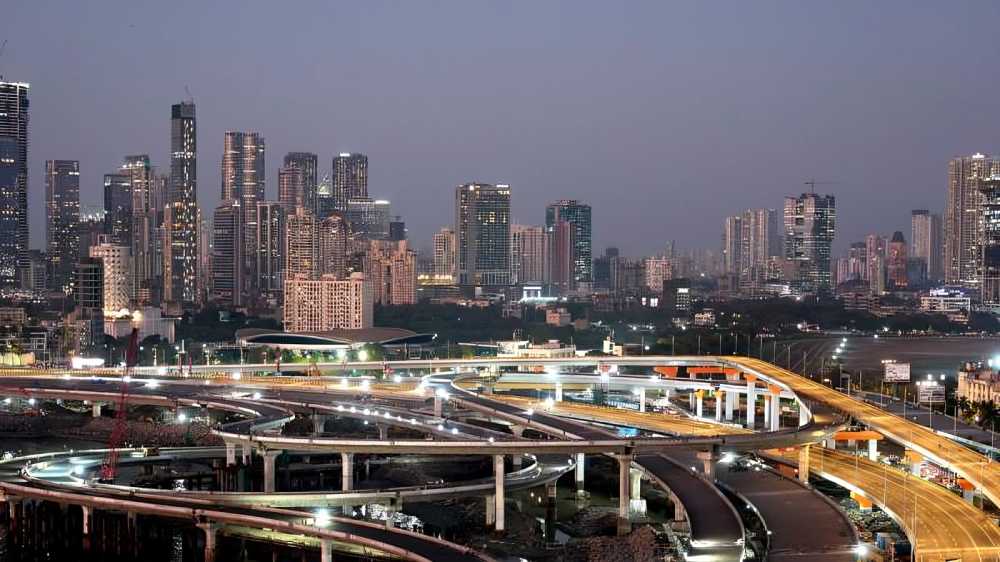October 3, 2025: Mumbai’s infrastructure development has reached a turning point. Rapid urbanisation and a population projected to reach 28 million by 2030 are exerting unprecedented pressure on the city’s ageing systems. Roads and bridges are congested, public transport is stretched beyond capacity, and monsoon flooding remains a recurring disruption. At this stage, the choices made in planning, financing, and execution will determine whether Mumbai can modernise successfully or fall behind under the weight of its own growth.
To meet these challenges, the city has laid out an ambitious roadmap: expansion of metro lines, new expressways and tunnels, the Mumbai Coastal Road Project, and redevelopment of major transport hubs. These projects are intended to improve mobility, reduce congestion, and create sustainable infrastructure for the future. But funding constraints are tightening. The Mumbai Metropolitan Region Development Authority (MMRDA) has reduced its FY 2025–26 capital outlay by over Rs 6,800 crore, from Rs 41,950 crore to Rs 35,150 crore, even as long-term requirements are estimated at nearly Rs 5 lakh crore. The mismatch makes efficiency and strategic allocation essential.
Encouragingly, key agencies are demonstrating adaptability. The Uttan–Virar Sea Link, for example, was initially estimated at Rs 87,427 crore but has been revised to Rs 52,652 crore through measures such as selective land acquisition, redesigned lanes, and single-pillar support structures. Such revisions show that projects can remain viable while becoming more cost-effective, provided planning is both practical and innovative.
At the municipal level, the Brihanmumbai Municipal Corporation (BMC) has adopted a similar approach. With a budget of Rs 74,427 crore for FY 2025–26, it is prioritising completion of ongoing works rather than dispersing funds across new projects. The Gargai Dam initiative is a case in point. Once tenders are finalised and construction is completed, the dam will supply an additional 440 million litres of water daily, meeting rising demand and illustrating how targeted investments can deliver immediate, tangible benefits.
Sustainable financing is equally critical. Large-scale infrastructure requires not only government spending but also innovative funding models. Public-private partnerships, infrastructure bonds, and calibrated user fees can provide steady capital without overburdening taxpayers. Projects that directly expand transport capacity, reduce congestion, and stimulate economic growth will ensure that each rupee invested delivers meaningful returns.
Equally important is the question of public trust. Transparent governance, fiscal discipline, and timely delivery of visible results reassure citizens that long-term vision and financial prudence can coexist. When commuters see new metro lines operational or coastal road segments completed on schedule, confidence in the system strengthens, creating political and social support for further investments.
Mumbai is therefore at a make-or-break stage. With careful planning, transparent execution, and diversified financing, the city can sustain momentum on its ambitious agenda. The expansion of metro corridors (Lines 4, 5, 7, 9, and 10), the Mumbai Coastal Road Project, expressway and tunnel networks, and the redevelopment of transport hubs together form the backbone of this transformation. The MMRDA has allocated Rs 40,187 crore for FY 2025–26, with nearly 87 percent directed towards these projects, underlining their central role.
If executed strategically, these initiatives can deliver modern, resilient systems that ease congestion, enhance daily life, and safeguard Mumbai’s position as India’s financial capital and a global metropolis. Poorly managed, they risk becoming stranded assets in an overstretched city. The path chosen now will shape Mumbai’s next chapter.





